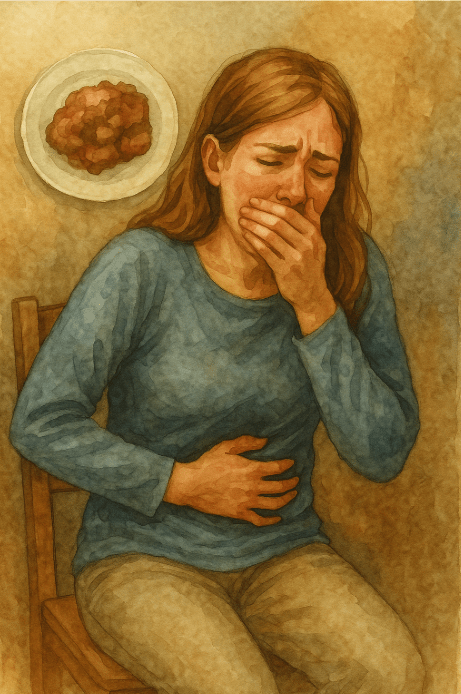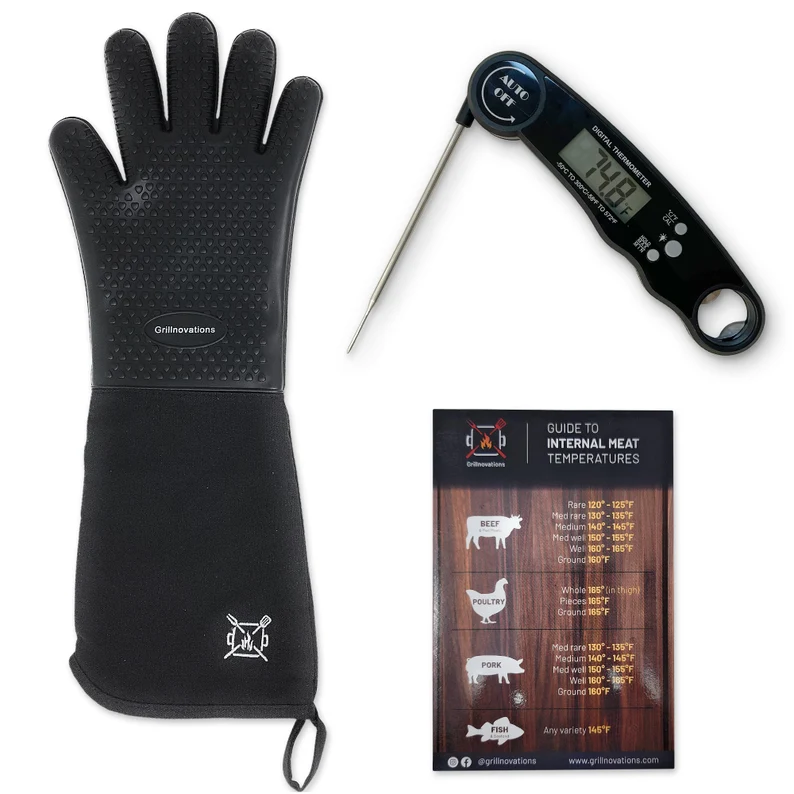Grieving Yersiniosis: When Infection Turns into a Lasting Wound
Grief tied to yersiniosis isn’t always about survival, it’s about mourning the health, energy, and peace that never fully return.

This post blends real grief with grounded knowledge. It isn’t clinical. It isn’t distant. It’s meant to sit beside you—not above you. The story you’ll read is meant to reflect what so many feel when living through or witnessing this condition: confusion, exhaustion, and quiet forms of courage.
If what you read feels familiar, please speak with your doctor. Your pain deserves more than silence.
The Infection Left, but the Damage Stayed Behind
He didn’t pay much attention to the cramps at first. He assumed it was just something he ate, a half sandwich at work, or perhaps some leftovers that had been reheated too quickly. Nothing serious, he thought.
But by morning, he found himself curled up on the bathroom floor…sweating, shaking, and swearing he had never experienced pain like this before. His wife rushed him to the ER, certain it was his appendix. Even the doctors shared the same suspicion. That was, until the scans returned normal and the bloodwork revealed unexpected abnormalities.
Yersinia enterocolitica. A bacteria he had never heard of, likely from something he couldn’t even recall eating…perhaps pork, milk, or contaminated surfaces.
It didn’t matter now…
🧠 Symptoms:
Symptoms usually appear 3–7 days after exposure and may last for 1 to 3 weeks:
– Diarrhea (often bloody)
– Fever
– Abdominal pain or cramping
– Nausea
– Symptoms resembling appendicitis (especially in older children and adults)
Rare complications include:
– Joint pain (reactive arthritis)
– Skin rashes
– Septicemia (bloodstream infection)
The infection had surged through his system like a relentless tide. His intestines were inflamed, and his joints began to ache. By the time they caught it, the damage had already begun.
They administered fluids, monitored his heart rate, and reassured him that he would be fine, but the word “fine” felt hollow.
Even after the fever subsided, the pain lingered. He couldn’t eat without feeling nauseated, nor could he sleep without awakening from nightmares of his stomach twisting painfully.
And worse still…he lost trust in food. He no longer felt confident in the kitchen. He scrutinized expiration dates as if they were countdowns to disaster, and treated each piece of meat with a thermometer like it was a sacred ritual.
Yet, he persevered…
He began slowly…with toasted bread, plain rice, then soup.
Eventually, he prepared a meal for two…
One day, he lit a candle at dinner once again. Not for ambiance, but for bravery.
Because even after the infection was gone, the fear remained. Yet so did his determination to move beyond it.
Risk Factors:
– Consuming raw or undercooked meat, especially pork
– Drinking unpasteurized milk or untreated water
– Handling raw meats without proper hygiene
– Weakened immune systems (higher risk of complications)
– Children under 5 (more susceptible)
Causes:
Yersiniosis is caused by ingesting contaminated food or water, or through contact with infected feces. Common routes:
– Undercooked pork
– Unpasteurized milk
– Contaminated water
– Cross-contaminated kitchen surfaces
– Handling infected animals (less common)
– Person-to-person fecal-oral transmission (rare)
Infected individuals can shed bacteria in their stool during illness and even weeks to months afterward.
He used to take pleasure in cooking. He used to host gatherings, pass around plates, pour wine, and laugh as if nothing bad could stem from joy.
Now, every meal felt like a potential threat. Every bite was a risk…
He felt foolish, ashamed that one infection could unravel so much. Ashamed that an invisible bacteria had stripped away his sense of normalcy.
The doctors assured him it was a rare occurrence, claiming that most people recover quickly. But he wasn’t like most people. He was the one whose gut never fully healed, the one who still flinched at stomach aches, the one who discovered that once safety is fractured, it’s incredibly difficult to piece it back together.
He walked away from the bacteria, but not the grief. Every quiet meal he now prepares is an act of courage, cloaked in the guise of routine.
📘 Diagnosis & Treatment
Diagnosis
– Stool sample culture is the primary diagnostic method
– May be misdiagnosed as appendicitis or inflammatory bowel disease
– Blood cultures in cases of suspected systemic infection
Treatment
– Most people recover without antibiotics
– Antibiotics (e.g., fluoroquinolones, trimethoprim-sulfamethoxazole) for severe, persistent, or bloodstream infections
– Hydration is critical to avoid dehydration from diarrhea
Prevention
– Cook meats, especially pork, to safe internal temperatures
– Wash hands thoroughly after handling raw meat or animal waste
– Avoid unpasteurized milk and surface water
– Use clean food preparation surfaces
– Keep food handlers out of work during and shortly after illness
Past infection does not provide immunity—reinfection is possible.
Living With It (Grief & Solace Interpretation)
Yersiniosis is the illness you didn’t see coming—but your gut felt every second of it.
It arrives with pain sharp enough to mimic a burst appendix, or quiet enough to pass for food poisoning. And then it lingers—sometimes longer than the bacteria itself.
For children, it can mean hospitalization. For parents, confusion. For those with weakened immune systems, it’s not just diarrhea—it’s danger. And the hardest part? It came from something as ordinary as milk. Pork. Water. A cutting board.
There’s grief in that betrayal. In watching the body revolt against what should have nourished it.
But there’s also recovery—often gentle, often slow. With fluids, rest, and caution. And in that care, the body remembers how to rebuild trust with food again.
I know this is heavy, and I understand that the road ahead may feel like a tangle of loss and unanswered questions. But please hear this: you are not broken because you are hurting; you are not weak because you are afraid. You are living through something real, and survival itself is a kind of grace. You are allowed to struggle, you are allowed to hope, and you are allowed to not have all the answers today. Whatever comes next, you do not face it empty-handed; you carry every moment of love that shaped you, and that will always be enough to keep going.
🎀 Gifts to help With Yersiniosis
🏥 Everyday Comforts for Everyday Battles
Managing Yersiniosis often means needing a little extra help.
Sometimes it’s about restoring dignity, ease, or simply getting through the day with less pain.
These carefully chosen tools aren’t just items; they’re small bridges back to living.
This section is about finding practical support, never shame.
Food Safety Digital Meat Thermometer – Prevention for a Bacteria That Hides in the Undercooked
Yersinia bacteria thrive in undercooked pork and poorly handled food. This easy-read digital thermometer helps ensure meat reaches safe internal temperatures before serving—stopping the infection before it starts. Fast, accurate, and kitchen-safe. Because sometimes survival is about one more degree.
🌿 Paths to Healing Beyond the Map
Sometimes traditional medicine isn’t enough.
If you’re exploring gentle, alternative options to help with Yersiniosis,
you might find comfort in plant-based compounds like **CBD or CBG**.
*This section is not medical advice, just a door left open.*
USA Medical Gut Pack – Support After the Infection Leaves Its Mark
Even after yersiniosis clears, it can leave behind inflammation, fatigue, and joint pain. This Total Pack blends CBD, digestive recovery herbs, and systemic calm to help the body recover from the inside out. It won’t fight the bacteria—but it may help undo what it left behind.
Need a Different Path Forward?
Every journey through grief looks different. Choose the next step that speaks to where you are now:
When You're Ready to Start Healing
Healing doesn’t mean forgetting.
It means finding small ways to carry your grief with strength and grace.
These are the stories, tools, and gentle steps to begin walking forward…at your own pace.
When You're Still in the Thick of It
Sometimes healing feels like a lie.
If you’re not ready to move on…if the pain still roars louder than the world wants to hear…this is the place where you’re allowed to feel it.
No sugarcoating. No pretending. Just truth.
When You're Holding on to Who’s Still Here
Grief reminds us to love louder.
If someone you love is still with you, this is your place to celebrate them, honor them, and create new memories while there’s still time.
Joy and sorrow can live side by side.






